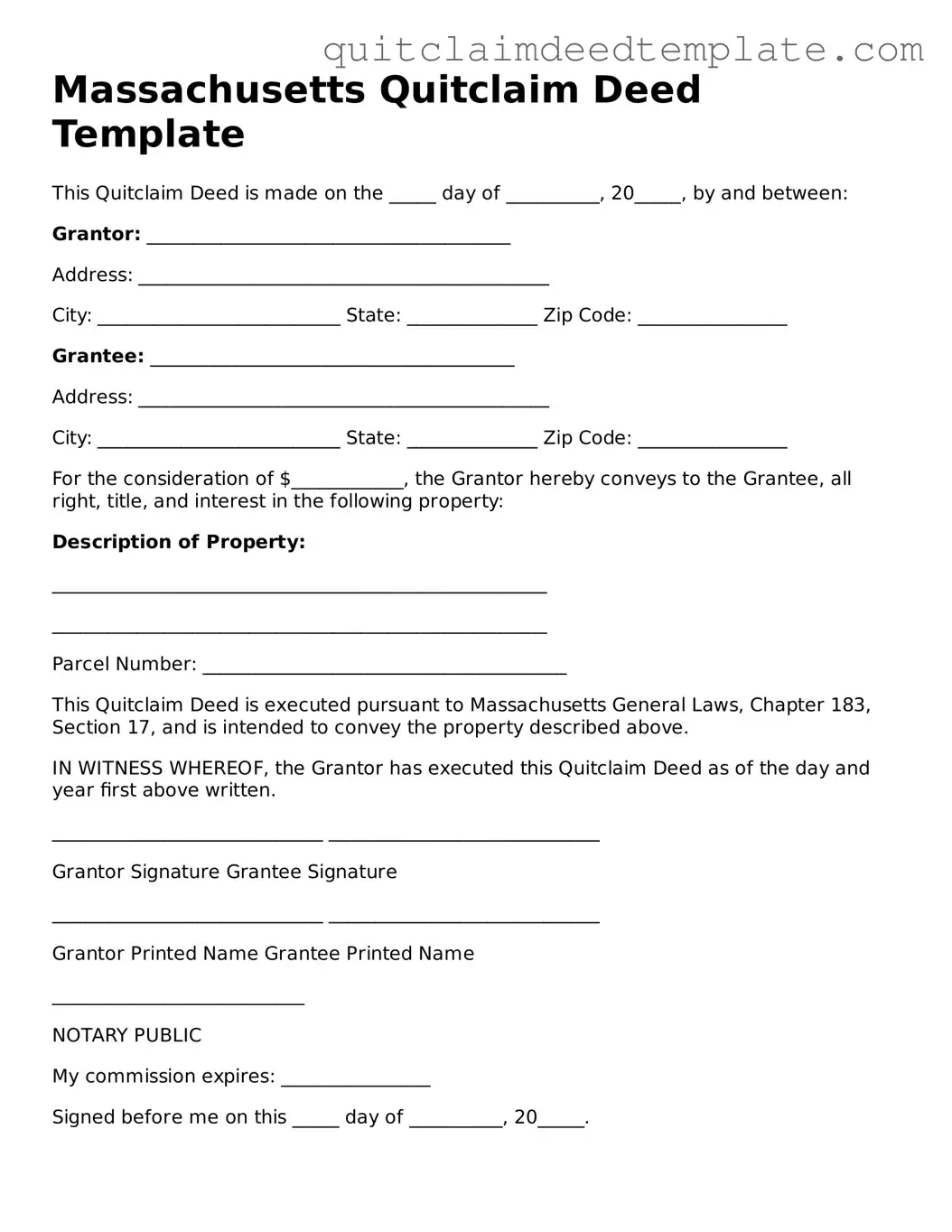Documents used along the form
When transferring property in Massachusetts, the Quitclaim Deed is a vital document. However, several other forms and documents often accompany it to ensure a smooth and legally sound transaction. Below is a list of these essential documents, each serving a unique purpose in the property transfer process.
- Title Search Report: This document provides a detailed history of the property’s ownership. It helps identify any liens, encumbrances, or claims against the property, ensuring that the seller has the right to transfer ownership.
- Property Transfer Tax Form: This form is required by the Massachusetts Department of Revenue. It calculates the tax due on the transfer of the property, which must be paid before the deed can be recorded.
- Affidavit of Consideration: This affidavit states the purchase price of the property. It is important for tax purposes and helps clarify the nature of the transaction for the local authorities.
- Certificate of Good Standing: Often required for corporate sellers, this document confirms that a business entity is properly registered and compliant with state regulations. It assures buyers that the seller has the legal authority to sell the property.
- Power of Attorney: In cases where the seller cannot be present to sign the deed, a Power of Attorney allows another individual to act on their behalf. This document must be properly executed to ensure its validity.
- Settlement Statement: This document outlines all financial details of the transaction, including closing costs, fees, and the final amount due. It provides transparency and helps both parties understand their financial obligations.
These documents collectively enhance the integrity of the property transfer process in Massachusetts. Each one plays a crucial role in ensuring that all legal requirements are met, protecting both the buyer and the seller throughout the transaction.
